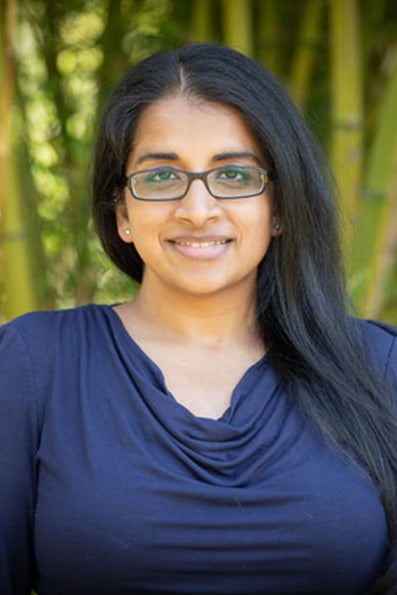Biography
Charusheela Ramanan received her Chemistry B.Sc. from the University of California, Berkeley in 2005. She completed her Ph.D. research at Northwestern University in 2011, where her thesis focused on the development and photophysical characterization of novel molecular systems for organic photovoltaic devices.
She then carried out postdoctoral research at Vrije Universiteit/Laserlab Amsterdam, where she used time-resolved spectroscopy to study the biophysics of photosynthetic energy conversion. Following this, she worked as a senior postdoctoral researcher in Photoconversion Materials, developing in situ Raman characterization of organic optoelectronic devices.
In March 2017, she joined the division of Molecular Electronics at MPI-P as a group leader, where she built and manages a time-resolved laser lab for characterizing photoexcited electronic processes.
Since September 2020, she is an Assistant Professor in the Physics of Energy Division at the Vrije Universiteit/LaserLaB Amsterdam. Her group synthesizes and studies light-energy conversion in organic chromophore systems.
Research Description
We characterize light-matter interactions in organic materials for energy and sensing applications. Our goal is to understand the interplay between ordered/disordered coupling interactions in organic chromophore systems and photoactivated processes, such as light-harvesting, excitation energy transfer, photoexcited charge separation. These include molecular and polymer systems semiconductors as well as biohybrid and biomimetic systems.
Organic chromophores provide a broad range of possibilities for cost effective and environmentally friendly technologies for a variety of applications, including solar electricity, solar fuel production, photocatalysis, light-emitting diodes, sensors, switches, and transistors. However, these materials still fall short of their promising potential. This is largely due to the complex balance of order and disorder in these materials. Neighbouring organic chromophores experience electronic, vibrational, and electron-vibrational (vibronic) coupling interactions that determine their photoactive energy landscape.
We develop new materials, in house and in cooperation with our collaborators, and study the relationship between inter-/intra-molecular couplings and photophysical dynamics. Light-driven processes in these systems occur across a broad range of timescales. We use time-resolved absorption and photoluminescence spectroscopies to explore electronic photoexcited processes from the femto- to millisecond timescale.
Selected Recent Publications
- K. Thakur, et al. Quantifying Exciton Annihilation Effects in Thermally Activated Delayed Fluorescence Materials. Adv. Opt. Mater., 2101784 (2021).
- I. Rörich, et al. Temperature dependence of the photo- and electroluminescence of poly(: P -phenylene vinylene) based polymers. J. Mater. Chem. C. 6, 10569–10579 (2018).
- W. Huang, et al. Asymmetric Covalent Triazine Framework for Enhanced Visible-Light Photoredox Catalysis via Energy Transfer Cascade. Angew. Chemie - Int. Ed. 57, 8316–8320 (2018).
- R. Baez-Cruz, et al. Role of pH in the synthesis and growth of gold nanoparticles using L-asparagine: A combined experimental and simulation study. J. Phys. Condens. Matter. 33 (2021)
- R. Białek, et al. Insight into Electron Transfer from a Redox Polymer to a Photoactive Protein. J. Phys. Chem. B. 124, 11123–11132 (2020).
